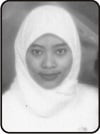Is the Younger the Better? Teaching English to Young Learners in the Indonesian Context
Abstract
ABSTRACT: It is universally acknowledged that learning a second/foreign language, e.g. English, since early childhood would contribute positively to the child’s language acquisition. Native-like pronunciation is one of the favored results gained from this process. This assumption is strongly supported by the Critical Period Hypothesis i.e. a biologically determined period of life when language can be acquired more easily. However, many studies indicate that “the younger the better” in learning English is not necessarily true. Native-like pronunciation and proficiency have been found to be acquired by a learner who started learning English in his adulthood. In regard to this matter, this paper attempts to review a belief “the younger the better” in learning English in the Indonesian context by looking at issues related to optimal age, factors contributing to the success of L2 acquisition, and current practices of teaching English to Young Learners (TEYL) in the Indonesian context.
KEY WORDS: second language, teaching English to young learners, critical period hypothesis, optimal age, psychosocial context, and learning condition.

About the Author: Ika Lestari Damayanti, M.A. is a Lecturer at English Department, Faculty of Art and Language Education (FPBS), Indonesia University of Education (UPI) in Bandung. She could be reached at ikadlovely@yahoo.com.sg
How to cite this article? Damayanti, Ika Lestari. (2008). “Is the Younger the Better? Teaching English to Young Learners in the Indonesian Context” in EDUCARE: International Journal for Educational Studies, Vol.1(1) August, pp.31-38. Bandung, Indonesia: Minda Masagi Press owned by ASPENSI in Bandung, West Java; and FKIP UMP in Purwokerto, Central Java, ISSN 1979-7877.
Chronicle of the article: Accepted (June 27, 2008); Revised (July 27, 2008); and Published (August 17, 2008).
Full Text:
PDFReferences
Abudarham, S. (1987). “Fact and Fiction” in S. Abudarham [ed.]. Bilingualism and the Bilingual. Berkshire: NFER Nelson Publishing Company Ltd., p.15-34.
Brown, H.D. (2000). Principles of Language Learning and Teaching. New York: Longman.
Cameron, L. (2001). Teaching Language to Young Learners. Cambridge: Cambridge University Press.
Cenoz, J. (2003). “The Influence of Age on the Acquisition of English: General Proficiency, Attitudes and Code-Mixing” in M.d.P.G. Mayo & M.L.G. Lecumberri [eds.]. Age and the Acquisition of English as a Foreign Language. London: Multilingual Matters Ltd., p.77-114.
Cook, V. (1991). Second Language Learning and Language Teaching. London: Routledge.
Ellis, R. (1994). The Study of Second Language Acquisition. Oxford: Oxford University Press.
Gass, S.M. & L. Selingker. (1994). Second Language Acquisition: An Introductory Course. London: Lawrence Erlbaum Associates.
Grosjean, F. (1982). Life with Two Languages: An Introduction to Bilingualism. Harvard: Harvard University Press.
Hamers, J.F. & M.H.A. Blanc. (1989). Bilinguality and Bilingualism. Cambrudge: Cambridge University Press.
Hyltenstam, K. & N. Abrahamsson. (2001). “Age and L2 Learning: The Hazards of Matching Practical ‘Implications’ with Theoretical Facts” in Tesol Quaterly, Vol.35(1), p.151-170.
Khan, J. (1991). “Lessons Worth Remembering—from Primary French in Britain” in C. Kennedy & J. Jarvis [eds.]. Ideas and Issues in Primary ELT. London: Nelson, p.22-29.
Leccumberri, M.L.G. & F. Gallardo. (2003). “English FL Sounds in School Learners of Different Age” in M.d.P.G. Mayo & M.L.G. Lecumberri [eds.]. Age and the Acquisition of English as a Foreign Language. London: Multilingual Matters Ltd., p.115-135.
Mayo, M.d.P.G. & M.L.G. Lecumberri [eds.]. (2003). Age and the Acquisition of English as a Foreign Language. London: Multilingual Matters Ltd.
Patkowski, M. (1990). “Age and Accent in Second Language” in Applied Linguistics, Vol.11(1), p.73-87.
Rixon, S. (1992). “English and Other Languages for Younger Children: Practice and Theory in a Rapidly Changing World” in Language Teaching, Vol.25(2), p.73-91.
Rixon, S. (2000). “Optimum Age or Optimum Conditions? Issues Related to the Teaching of Languages to Primary Age of Learning”. Available online at http://www.britcoun.org/english/eyl/article01.htm [Bandung: 11/4/2007].
Singleton, D. (2001). “Age and Second Language Acquisition” in Annual Review of Applied Linguistics, Vol.21, p.77-89.
Singleton, D. (2003). “Critical Period or General Age Factor(s)?” in M.d.P.G. Mayo & M.L.G. Lecumberri [eds.]. Age and the Acquisition of English as a Foreign Language. London: Multilingual Matters Ltd., p.3-22.
Singleton, D. & L. Ryan. (2004). Language Acquisition: The Age Factor. London: Multilingual Matters Ltd.
Stern, H.H. (1983). Fundamental Concepts of Language Teaching. Oxford: Oxford University Press.
Todd, S.H.M. (2003). “Know your Grammar: What the Knowledge of Syntax and Morphology in an L2 Reveals about the Critical Period for Second/Foreign Language Acquisition” in M.d.P.G. Mayo & M.L.G. Lecumberri [eds.]. Age and the Acquisition of English as a Foreign Language. London: Multilingual Matters Ltd., p.59-73.
EDUCARE: International Journal for Educational Studies. Ciptaan disebarluaskan di bawah Lisensi Creative Commons Atribusi-BerbagiSerupa 4.0 Internasional
